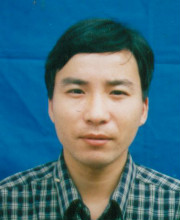以下是引用abin在2007-7-16 20:27:00的发言:
首先考虑支持细胞瘤 |
The differential diagnosis of primary ovarian tumors with a tubule-rich pattern may sometimes be challenging. Specifically, Sertoli cell tumor may be histologically mimicked by other tumors, such as endometrioid tumors (including borderline tumor, well-differentiated carcinoma, and the sertoliform variant of endometrioid carcinoma) and carcinoid tumor. Most cases can be distinguished from one another by traditional clinical, gross, and histologic features. Sertoli cell tumor is usually confined to the ovary, unilateral, and shows distinctive open and closed tubular patterns with bland round nuclei. In elongated solid tubules, the nuclei are characteristically arranged in a “paired cell” pattern. Endometrioid tumors, especially carcinoma, may be bilateral or of advanced stage. They may display other growth patterns such as villoglandular forms, confluent glandular appearances, and infiltrative growth with stromal desmoplasia. Their nuclei may sometimes be somewhat atypical or pleomorphic, and glandular lumens may contain mucinous secretions. Other characteristic features include squamous metaplasia, endometriosis, and a background of borderline tumor or adenofibroma. Primary carcinoid tumor is usually unilateral and confined to the ovary. Distinctive trabecular or strumal patterns may be appreciated, and the periphery of cells may show fine, granular, and eosinophilic granules. The nuclei are round and stippled with a “salt and pepper” appearance. Occasionally, a background of a teratoma may be evident, and the carcinoid syndrome may be present in some patients.
以下是引用abin在2007-7-16 20:27:00的发言:
首先考虑支持细胞瘤 |
The differential diagnosis of primary ovarian tumors with a tubule-rich pattern may sometimes be challenging. Specifically, Sertoli cell tumor may be histologically mimicked by other tumors, such as endometrioid tumors (including borderline tumor, well-differentiated carcinoma, and the sertoliform variant of endometrioid carcinoma) and carcinoid tumor. Most cases can be distinguished from one another by traditional clinical, gross, and histologic features. Sertoli cell tumor is usually confined to the ovary, unilateral, and shows distinctive open and closed tubular patterns with bland round nuclei. In elongated solid tubules, the nuclei are characteristically arranged in a “paired cell” pattern. Endometrioid tumors, especially carcinoma, may be bilateral or of advanced stage. They may display other growth patterns such as villoglandular forms, confluent glandular appearances, and infiltrative growth with stromal desmoplasia. Their nuclei may sometimes be somewhat atypical or pleomorphic, and glandular lumens may contain mucinous secretions. Other characteristic features include squamous metaplasia, endometriosis, and a background of borderline tumor or adenofibroma. Primary carcinoid tumor is usually unilateral and confined to the ovary. Distinctive trabecular or strumal patterns may be appreciated, and the periphery of cells may show fine, granular, and eosinophilic granules. The nuclei are round and stippled with a “salt and pepper” appearance. Occasionally, a background of a teratoma may be evident, and the carcinoid syndrome may be present in some patients.
































